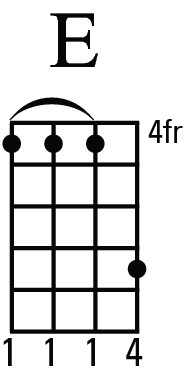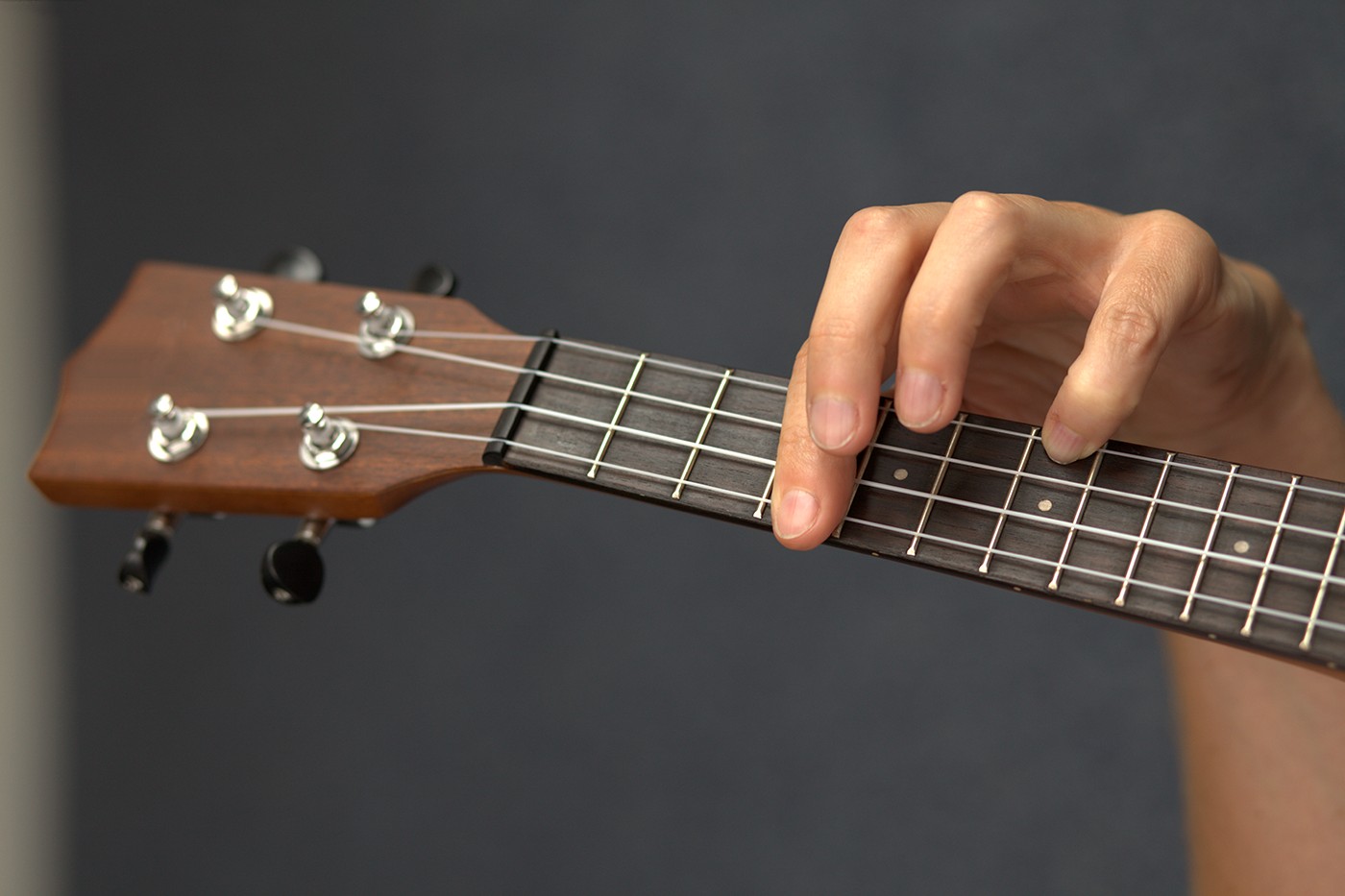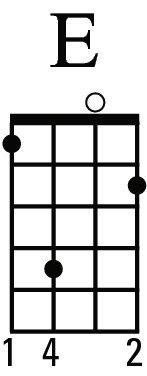Ukulele For Dummies (28 page)
Read Ukulele For Dummies Online
Authors: Alistair Wood

Figure 6-20:
Barred E chord diagram.

Figure 6-21:
Barred E chord fingering.

Figure 6-22:
Open E chord diagram.

Finding the right fret
The simplest way to find the right position for a moveable chord is to compare it to a chord you know already. For example, if you need to play G 7, take the G7 shape and move every note up one fret. When you're moving chords around, just remember that no sharps or flats lie between B and C, and between E and F.
7, take the G7 shape and move every note up one fret. When you're moving chords around, just remember that no sharps or flats lie between B and C, and between E and F.
A more involved but more direct method is to know where the root note (the note the chord is named after) is located in the chord and on the fretboard. You can find diagrams showing locations of the notes on the fretboard in Appendix B. Here are some root notes for a few chord shapes:
 Root on the g-string: A shape, Am shape, G7 shape.
Root on the g-string: A shape, Am shape, G7 shape.
 Root on the C-string: D shape, C shape, C7 shape, Dm shape.
Root on the C-string: D shape, C shape, C7 shape, Dm shape.
 Root on the E-string: F shape.
Root on the E-string: F shape.
 Root on the A-string: A shape, A7 shape, Am shape, C shape.
Root on the A-string: A shape, A7 shape, Am shape, C shape.
This method of working out chords takes a lot of thinking, and so don't worry if you don't get it right away.
Inviting Round More Chord Families
A chord family exists for every note on the ukulele. All these chord families are built just like the C family. The distance between, for example, the I and V chords in the C family and the I and V chords in the G family is exactly the same, so changing between I and V in any family feels the same. This makes them very useful. For example, if you're playing a IâIVâV progression in C but find that the melody goes a little too low for you to sing, you can just use the I, IV and V chords in the D family instead. The song will sound the same, but will be easier for you to sing.
This section goes through the chord families you're most likely to encounter on the ukulele and includes a number of the moveable chord shapes from the preceding section.
Geeing up the G chord family
The G chord family fits very nicely indeed on the ukulele. It has only one tricky chord shape to deal with â Bm â but the good news is that Bm is one of the less-used chords in the family, so it doesn't crop up very often.
With the chords discussed earlier in this chapter and in Chapter 4, you can build the G family of chords that are shown in Figure 6-23.
The G family of chords is used in âIrish Rover' (Figure 6-9) and âAloha Oe' (Figure 13-3).
Figure 6-23:
G chord family diagrams.

Finding out about the F chord family
The F chord family, like the G family, only has one tricky chord shape â B â but that is in the very common IV position of the family. That makes it a little trickier to use than the G family, but don't worry â it's still very manageable.
â but that is in the very common IV position of the family. That makes it a little trickier to use than the G family, but don't worry â it's still very manageable.
When tackling songs which use the E family (which doesn't suit the ukulele at all well), ukulele players commonly change them to the F family by moving every chord up one fret. That means the progression sounds the same (since the distances between the chords stay the same) but is much easier to play.
The F chord family needs one new chord, C7, which is very easy; you just play the A-string at the first fret and all the other strings open. The whole family of chords can be found in Figure 6-24.
Figure 6-24:
F chord family diagrams.

